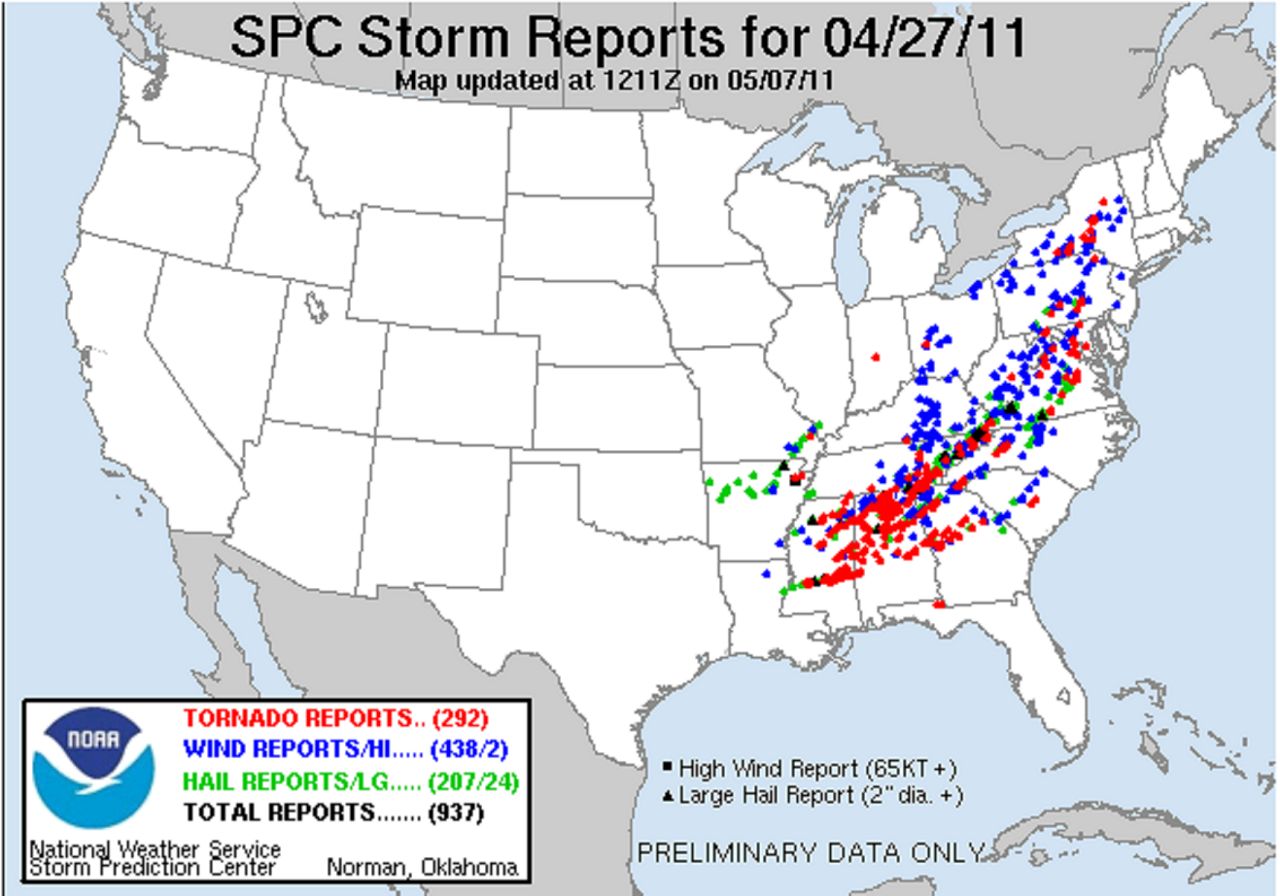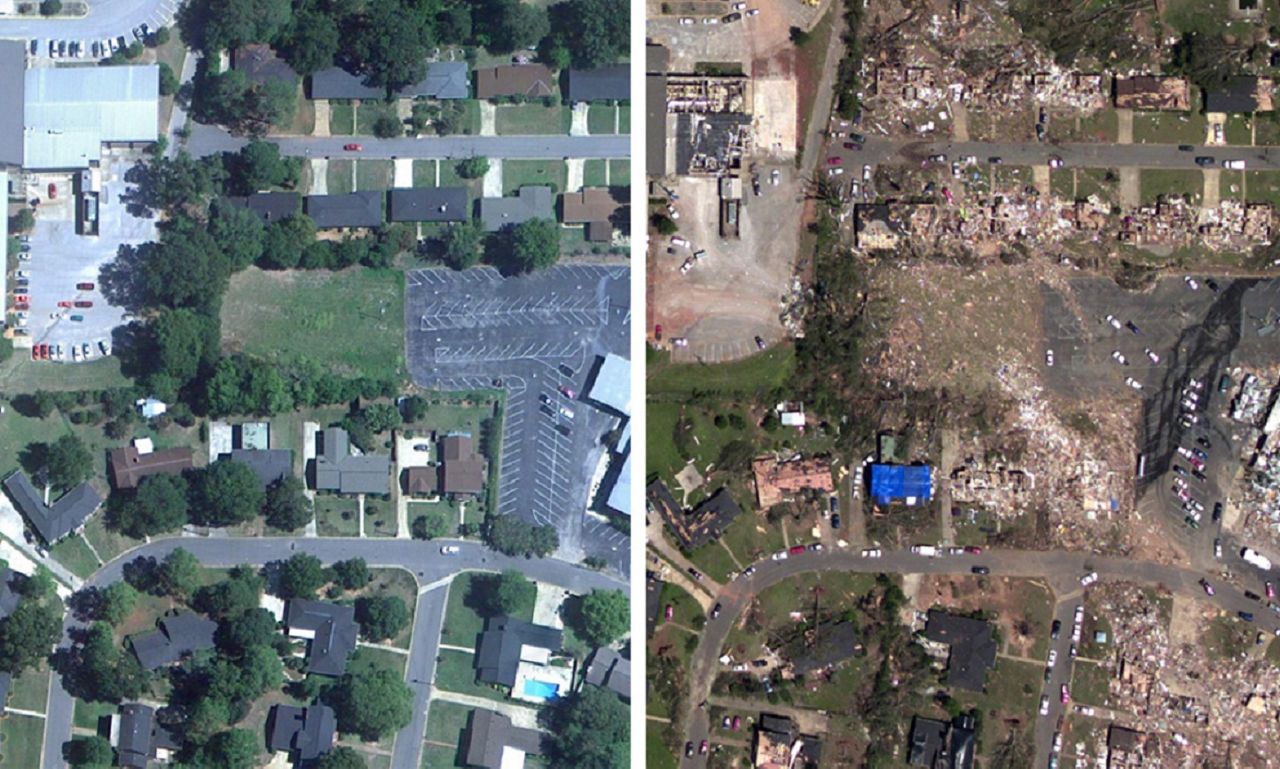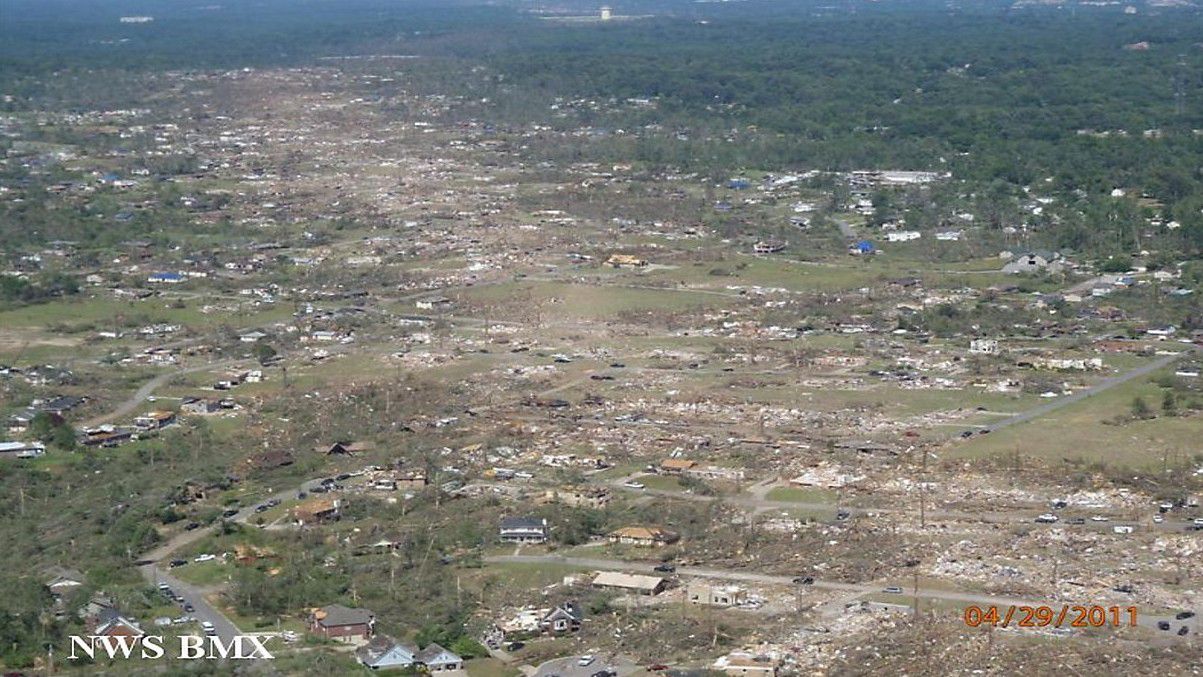April 2011 will go down in the history books with the most observed tornadoes in a single month with 751. Among the several multi-day outbreaks was the event from April 25-28, dubbed a super outbreak. The most active and deadliest day was April 27.
The only other outbreak that can compare to the April 25-28, 2011 event was the notorious Super Outbreak of April 1974. While the total number of tornadoes pales compared to the 2011 event, April 1974 saw more violent tornadoes (F-3 or higher as rated by the old Fujita Scale).
However, the outbreak ten years ago was responsible for more property destruction (by cost) and fatalities. This can be attributed to more populated areas being hit by deadly tornadoes. Altogether, more than a dozen states dealt with tornadoes during the four-day span.

No day from April 2011 can compare to the impact of April 27, with 15 violent tornadoes (EF-4 or EF-5) striking Alabama, Mississippi, Tennessee and Georgia. Alabama was the hardest-hit state with 11 of those tornadoes impacting it.

April 27 included the first EF-5 tornado in three years, a storm that produced 205 mph winds near Smithville, Miss.
This date is most likely the deadliest day for tornadoes in the last 75 years, and a big part of this dubious distinction are the 69 tornadoes that impacted Alabama. The most deadly of these was an EF-4 tornado that impacted the cities of Tuscaloosa (home to the University of Alabama) and Birmingham (the state’s largest city) and its suburbs.
At its most powerful and destructive point, it was 26 football fields wide and had winds of 190 mph. It stayed on the ground for more than 80 miles, injured more than 1500 people and killed 65 others.

While such a destructive and deadly natural disaster negatively impacted so many, there are lessons that were learned from the event.
First, this event was very well forecast, with the public realizing the historic potential of the event a week in advance. The forecasts from the Storm Prediction Center became more detailed and eventually concentrated on the most impacted areas. This level of forecasting is now commonplace and lead to the long lead times during the event.
Speaking of, the lead times that local National Weather Service offices provided averaged 24 minutes. That means people had almost half an hour to take action to protect life and property before a tornado struck.
Last, people in the most heavily impacted southern states are now much more aware of the destructive nature of tornadoes and heed forecasts before and warnings during an event more seriously. Unfortunately, for some, it takes an event like this to open eyes to how destructive and deadly weather can be.
The outbreak of April 25-28, and more specifically, April 27, will be a watershed event and one we will compare other severe weather events to for decades to come.



